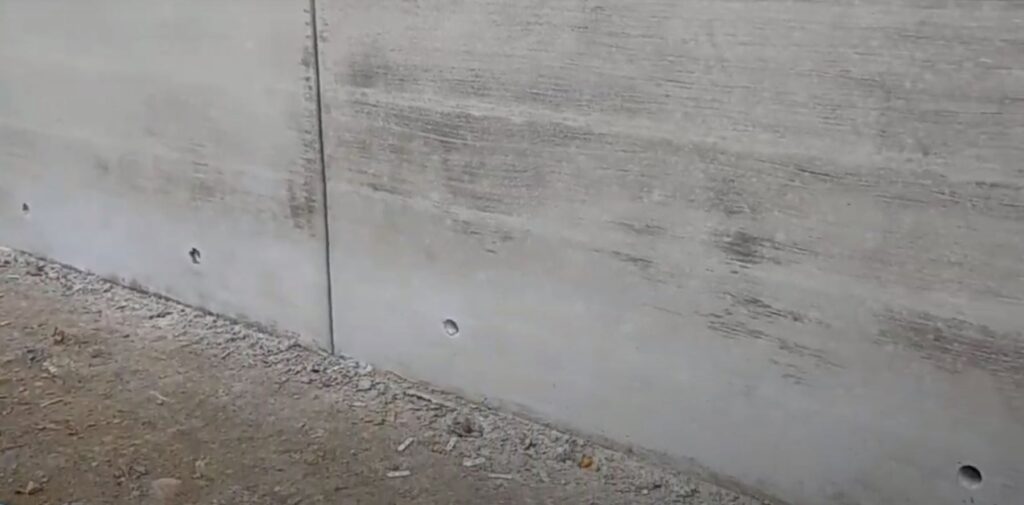Creating weep holes in retaining walls is an essential aspect of retaining wall construction, particularly in regions like Hamilton where varying weather conditions can impact the structure’s integrity. Weep holes are crucial for ensuring proper drainage, maintaining the wall’s stability, and prolonging its lifespan.
Understanding Weep Holes
Weep holes allow water to drain from behind the retaining wall, reducing hydrostatic pressure and preventing water buildup. They are typically around 25mm in diameter to allow water to drain while preventing debris from entering. In Hamilton’s suburbs, such as Chartwell and Temple View, where retaining walls are common in residential landscapes, understanding the installation and function of weep holes is vital for homeowners.
Installation Process
- Locating and Measuring: The first step is to determine the appropriate number and placement of weep holes. They should be positioned at the lowest points of the wall to facilitate optimal drainage. Start by marking the wall where the weep holes will be drilled, usually around 60 inches from end to end and 6 inches from the ground.
- Drilling the Holes: Using a power drill with a half-inch carbide drill bit, drill holes at the marked spots, about two inches deep. The diameter of the holes should be around 25mm.
- Inserting Weep Hole Covers: After drilling, inserts made of small plastic or metal tubes are placed into the holes. These inserts facilitate drainage while preventing the entry of debris.
Health and Safety Considerations
It’s important to consider the structural integrity of the retaining wall during installation. Adding weep holes without a proper assessment, especially in existing walls, could potentially worsen water leakage problems if there are issues with the wall’s flashing system. In such cases, a more comprehensive approach to repair and renovation might be necessary.
Material and Equipment
The process requires basic tools like a measuring tape, crayon for marking, power drill, and appropriate drill bits. Expanding anchors and bolts are used to secure the weep hole covers.
Best Practices
- Gravel Backfill: Including a layer of angular aggregate or gravel behind the retaining wall is crucial for effective drainage. This gravel layer should extend up to the level of the weep holes.
- Soil Compaction: Compacting the soil behind the wall helps reduce water permeability, thus protecting the wall against hydrostatic pressure.
- Filter Fabric: Using a permeable filter fabric between soil and gravel surfaces prevents clogging and maintains the functionality of the drainage system.
In Hamilton, whether you’re tackling a DIY project in Temple View or considering professional services in Chartwell, understanding these aspects of weep hole installation is key to ensuring the durability and safety of your retaining wall. For those seeking professional retaining wall builders assistance, Quality Fencing Hamilton can provide expertise and quality service for your retaining wall project
Essential FAQs on Weep Holes in Retaining Walls
What is the Primary Purpose of Weep Holes in Retaining Walls? Weep holes are designed to drain water from behind the retaining wall, reducing hydrostatic pressure and preventing structural damage caused by water buildup.
How Do Weep Holes Protect the Wall’s Integrity? By allowing water to escape, weep holes relieve hydrostatic pressure, preventing cracking, bulging, or collapse of the wall due to water pressure.
What is the Recommended Size for Weep Holes? The typical diameter for weep holes is about 25mm (1 inch), large enough to ensure efficient drainage while preventing debris entry.
Where Should Weep Holes Be Located on the Wall? Weep holes should be placed at the lowest points of the wall, where water is likely to accumulate, to facilitate optimal drainage.
How Frequently Should Weep Holes Be Spaced? The spacing of weep holes varies based on the wall’s size and design but is generally recommended every 60 inches along the length of the wall.
Can Weep Holes Be Added to an Existing Retaining Wall? Yes, weep holes can be added to existing walls, but it requires careful drilling and consideration of the wall’s structural integrity.
Are Special Materials Required for Installing Weep Holes? Basic tools like a measuring tape, crayon, power drill, and carbide drill bit are needed, along with expanding anchors and bolts for securing weep hole covers.
What Role Does Backfill Play in Conjunction with Weep Holes? Backfill, particularly gravel, is crucial as it allows water to drain out of the wall efficiently through the weep holes into the surrounding soil.
Is Maintenance Required for Weep Holes? Regular checks to ensure they are clear of debris and functioning properly are necessary to maintain the effectiveness of weep holes.
How Do Environmental Factors Impact Weep Hole Functionality? Environmental factors like soil type, rainfall, and the water table level in the area can influence the amount of water that needs to be drained and, consequently, the design and spacing of weep holes.
What Precautions Should Be Taken When Installing Weep Holes? Ensure proper placement and size, and avoid undermining the wall’s stability during installation. It’s also crucial to assess and rectify any issues with the wall’s existing drainage system.
Can Incorrect Weep Hole Installation Cause Problems? Improperly installed weep holes can lead to inadequate drainage or even worsen existing water leakage issues, emphasizing the need for correct installation practices.
These FAQs offer a basic understanding of weep holes in retaining walls. For more detailed guidance, it’s advisable to consult with professional retaining wall builders, especially for complex or large-scale projects




